Campbell, Colin (McKechnie Section 2)
Recorded by Jackson (Dictionary), who mentions a silhouette (which I would date to c. 1822) in the Kilner collection, where it remains. The only other example known to me is in my collection; it is dated 1822. Both silhouettes are signed 'Campbell'. Foskett records a Colin Campbell who was working in 1820 as a portrait miniaturist at 187 High Street, Edinburgh, and who may have been the profilist.
Campbell based his style on that of the prolific artist Edward Foster. It is not certain that Foster visited Scotland, nor is it known if Campbell, assuming that he lived in Scotland, ever left that country. He may, however, have had the opportunity to examine profiles by Foster. So similar is Campbell's style to Foster's that, at a glance, it might be difficult to differentiate between the work of the two artists. Campbell, although he painted in gold upon a base of much the same tones of Indian and darker reds as did Foster, used gum arabic much more thickly on his work. This thick layer of gum arabic is seen on all parts of his profiles except the sitter's face. Foster indeed used gum in the same way, but applied it more thinly. Campbell's work therefore has a much shinier appearance than Foster's, and, because of this thickness of gum, after 150 years much more crazing of the gum is evident on the surface of his work, which has broken almost to the point of peeling. Most portrait miniaturists, working on ivory, used gum to stress the lines of clothing and other details, and did likewise when painting profiles on paper or card.
A comparison of two magnified photographs of crazing on the surface of two silhouettes, one by Campbell and the other by Foster, will help to distinguish their work.
709, 710
The detail of Campbell's work can be seen here to be much less finely painted than that of Foster's work.
The bust-line finish of the two illustrated profiles by Campbell is similar, but whether this outline was constant in his work is impossible to say.
Campbell even followed Foster in the style of his signature. Each of the two extant silhouettes is signed beneath the bust-line in small letters: one 'Campbell', the other 'Campbell. 1822'.
If the profilist is indeed Colin Campbell the miniaturist, it is unlikely that he used trade labels.
Ills. 707-711
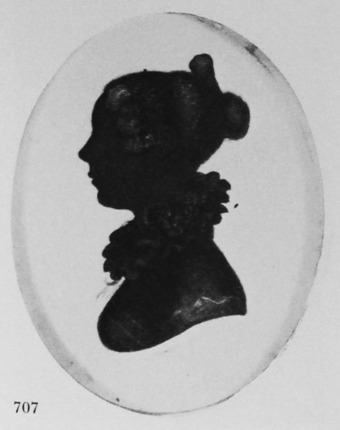
Unknown woman
Silhouette painted on card, in reddish-brown, with gum Arabic
1822
2 7/8 x 2½in./74 x 64mm.
Apart from the sitter’s face, the entire silhouette is covered in thick, shiny gum arabic. The silhouette, which has an inner surround of ormolu, may have been reframed. Signed ‘Campbell, 1822’ below the bust-line.
Author’s collection
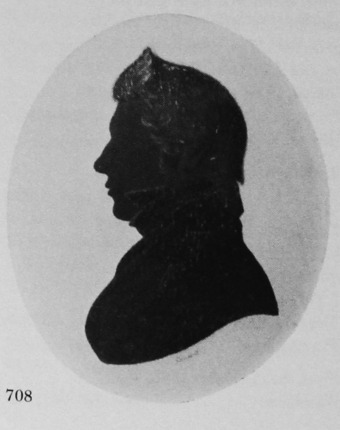
Unknown man
Silhouette painted on card, in Indian red, embellished in gold covered by gum arabic
c. 1822
3 ½ x 3in./90 x 77mm.
Frame: papier mâché, with convex glass
The thick layer of gum arabic is heavily crazed. Signed ‘Campbell’ below the bust-line.
R. Kilner collection
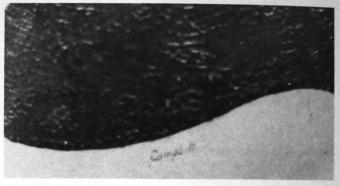
Crazing on the surface of a silhouette (708) by Colin (‘) Campbell.
R. Kilner collection
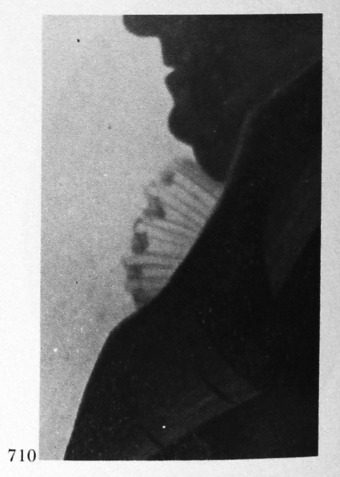
Crazing on the surface of a silhouette by Edward Foster.
Author’s collection
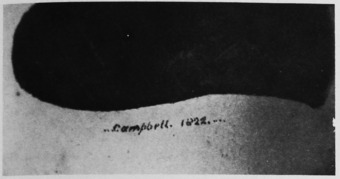
Signature of Colin Campbell, from the silhouette illustrated in 707.
Author’s collection
